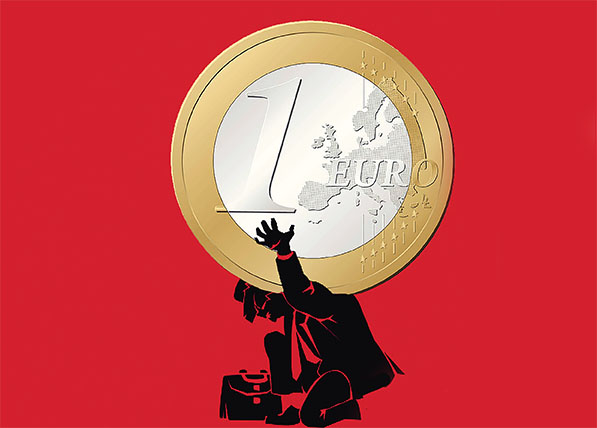SUMMARY OF THE PUBLIC DEBT ANALYSIS

Montenegro’ s public debt is on trajectory to a whopping 80% of GDP due to excessive and uncontrolled spending and capital projects which are largely non-transparent including the construction of first highway in Montenegro’s history. The Budget and Fiscal Responsibility Law defines how the government and the parliament should act in case the public debt exceeds 60% of GDP. Consequently, the government has managed to increase the collection of revenues over recent years (due to VAT two-fold increase from 17-21% and FDI flow) but has failed to curb expenditures which have continued to grow. Furthermore, the increase of revenues does not keep pace with the GDP growth which deserves attention.
The GDP growth had a rise of 24.5% over the period of 2014-2017 which was more than in China (17%) even though the inflation was low. This growth is mainly driven by government borrowing and foreign direct investments and as such, has its own natural limits- the already achieved public debt level and the limitation of FDI to spatial resources and the construction sector.
On the other hand the quality of life for ordinary Montenegrins hasn’t improved despite tremendous growth of public debt since independence in 2006.
The coverage of import by export is only 17% and since the country gained independence in 2006 the export has even decreased. The economy is poorly diversified, the industry is underdeveloped, while development is mainly focused is on agriculture and tourism. It is emphasized that tourism accounts to 20% of GDP. However, it is widely held that the optimal share of tourism in the GDP should be around 5%. High share of tourism in the GDP tells how bad the things are in other sectors of economy. (For example, last year's share of tourism in Italy's GDP was 2.2 %, in France 1.9% and Spain 4.7%)
Huge chunks of the tax debt have also been written off through government aid, whereby the budget has in this way been deprived of potential income, which has been substituted for through borrowing. The most notorious example of subsidies and generous government aid is the Podgorica Aluminum Plant (KAP) which has cost the tax payers more than €300 million since 2005 privatisation contract signed with Oleg Deripaska’s off-shore companies. Moreover several big companies of people close to the regime have been protected despite tax evasion and other irregularities.
As for the public debt structure, the Eurobonds account for more than a third of the total debt -€1,217 million. The Eurobonds are certainly not the best way of borrowing. Moreover Montenegro did not manage to realise all Eurobonds in 2016. That showed that the country’s rating among investors wasn't great in terms of its creditworthiness. However, thanks to the IMF and the World Bank support, primarily through positive reports on the state of national economy and through the WB guarantees, the government has continued to borrow and refinance the existing debt. Thus the Prime Minister Dusko Markovic received wind in the back from the US when he started his term and pledged “genuine reforms“. It can be said that Washington's political will is crucial in maintaining the liquidity of public finances. Figuratively speaking, Washington, in the present geopolitical constellation, keeps Montenegro’s public finances from drowning.
READ FULL PUBLICATION ANALYSIS OF MONTENEGRO'S PUBLIC DEBT FOR PERIOD 2006 - 2018

